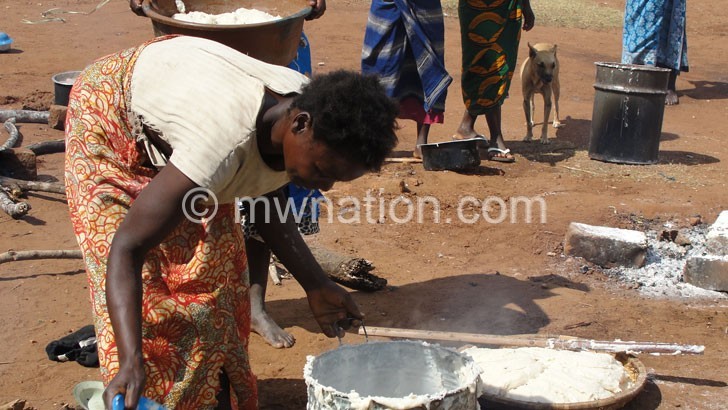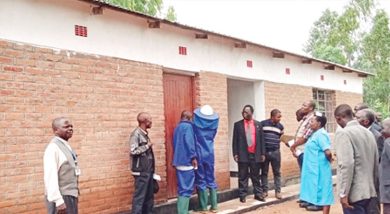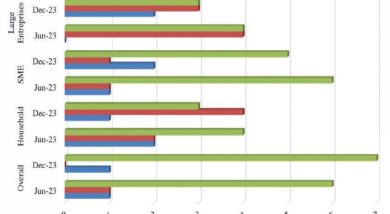Maize outlook stable—Govt
Figures from the second round of crop production estimates project that Malawi will have a 355 000 metric tonnes (MT) maize surplus as floods, hitherto feared to have wiped out a projected bumper harvest, had less impact on crops.
Ministry of Agriculture, Irrigation and Water Development Principal Secretary Grey Nyandule-Phiri told journalists in Lilongwe yesterday that the second round projection for maize production is now pegged at 3.35 million MT from 3.38 million MT during the first round of assessment, representing a 24.36 percent increase when compared to the 2017/18 final round estimate of 2 697 959MT.

He said floods will not have a bigger negative impact on crop production because they happened when crops had reached maturity stage and that some of the crops were just submerged in water, meaning people will still harvest.
Said Phiri: “These calamities had negative implication on livestock, crops, fisheries and irrigation infrastructure. Nevertheless, when the floods happened, crops in most affected areas were at an advanced physiological development stage; hence, the crops were only submerged in the waters and the loss was minimal.”
But the ministry said maize production is projected to decline by about 32 355MT in comparison to the first round projection which earlier indicated that farmers would harvest about 3.38 million MT in 2018/19 agriculture season.
While welcoming news of the projected maize surplus, Civil Society Agriculture Network (CisaNet) executive director Pamela Kuwali yesterday cautioned that some sections of the country’s population will still need food assistance.
She said: “Government in collaboration with stakeholders must ensure that food is effectively moved from areas of surplus to areas where there is a shortfall so that those in need must access it.
“It is also important to keep in mind that the surplus may affect market prices, so government and stakeholders must create an enabling market environment for a profitable market for small holder farmers.”
The second round of the agricultural production crop estimates has revealed that recent floods which hit some districts in the country did not bear huge impact on crop production- The Nation has observed.
The observation comes after the Ministry of Agriculture Irrigation and Water Development (MoAIWD) released the second round of estimates showing that the country will have a surplus of crops projected at 355 232 MT.
Revelations of minimal negative impact on crop production by floods have come two weeks after Ministry of Agriculture, Irrigation and Water Development told The Nation of February 28 that the impact of the recent floods threatened to reduce the bumper harvest earlier projected during the first round of crop production estimates.
In an interview then, the ministry’s spokesperson Hamilton Chimala said the floods in 17 of the country’s 28 districts would affect crops, livestock and fisheries. He said about 71 111 hectares (ha) of food and cash crops had been washed away by floods and feared that 291 470 households were at risk of harvesting nothing.
But while the latest outlook projects a comfortable national food situation, it fails to give a position on the food circumstances at household level both in terms of yields, accessibility and affordability.
Two weeks ago, the ministry’s initial assessment of the impact of floods indicated extensive destruction of crops in the Southern Region with Shire Valley Agricultural Development Division (ADD) classified as the worst affected with 19 127ha of crops damaged and 59 870 households affected,.
Karonga ADD was marked as the less affected area since 4 735 hectares of crops were washed away.
Yesterday, Minister of Agriculture, Irrigation and Water Development Joseph Mwanamveka said all ADDs, except Karonga, will still register an increase in maize production this season despite floods which emanated from cyclone Idai that largely caused havoc in Mozambique and Zimbabwe and parts of Malawi’s Lower Shire Valley.
Despite stating that there will be little impact because of the surplus food, the minister also outlined some of the measures his ministry will take to ensure that those households which will not harvest should have food on the table.
“In order to address effects of floods for farming households which may not or harvest little, government plans to distribute maize seeds and sweet potato vines to enable them produce the second crop using irrigation or residual
moisture,” he said.
In announcing the first round of crop estimates in February, Mwanamvekha said the estimates indicated that maize production would go up by 25 percent from 2.6 million MT to 3.3 million MT in 2018/19.
But, following the floods, the ministry’s assessment now shows that 71 111ha of maize, rice and pigeon peas have been damaged and, in the process, putting 291 470 households at risk of harvesting nothing.
Agriculture is the backbone of the country’s economy and vital for the livelihoods of most Malawians, including national and household food security.
The sector generates around a third of the country’s gross domestic product (GDP), accounts for 65 percent of employment and wires in around 60 percent of export earnings.
Its criticality to the country gets more pronounced when forward and backward linkages are factored in. Thus, when linkages of agricultural production and processing with input supply, trade and transport service are brought into the equation, the broader agri-food system contributes 44 percent to GDP and generates 74 percent of employment.
Maize is by far the most dominant crop grown by almost every farmer in Malawi and accounting for about 50 percent of the entire planted area.
The third round of the survey will run from April to May and involves weighing of harvest to obtain actual yield of crops based on the sampled households.
The post-disaster needs assessment dated March 24 indicated a budget of K30 billion to respond to the needs of flood victims, including food and shelter.




